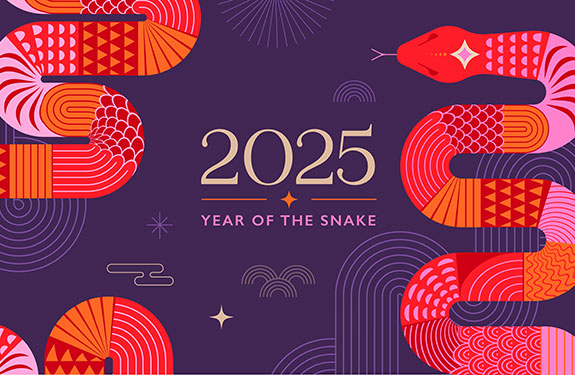The Year of Snake
You may have heard about how the Chinese love animals that they are happy to be born under some animal zodiac signs. This year, the Chinese will usher in the Year of Snake. Are you afraid of snakes? If you do, please do not shun away from this article before you read it about the Year of Snake.
Talking about calendars, the Chinese calendar system is well-known and one with a very long history. Although the Gregorian calendar is the official calendar in modern China, the Chinese calendar determines the calculation of festival dates and other auspicious events . The most significant of these events is the Chinese New Year and the associated festivities. The Chinese calendar is a Lunisolar one, much like many other traditional calendars, meaning that the lunar phase and the solar positioning in the Earth’s sky are incorporated.
New Year on the Chinese calendar falls on the second new moon after the winter solstice, and on most occasions falls very close to the beginning of spring. This is why Chinese New Year is also known as the Spring Festival and is thought to have a history of about 3,500 years. The festival lasts over two weeks, starting with the ‘reunion dinner’ when families gather to celebrate over a feast on New Year’s Eve and ending with the Lantern festival on the fifteenth day during the full moon.
Each year is attributed to an animal based on the Chinese zodiac which repeats on a twelve-year cycle. Starting with the year of the rat and ending with the year of the pig. Each year is also associated with one of the five elements: wood, fire, earth, metal, and water. It is believed that the characteristics of individuals are determined by the animal and element associated with the year they are born. Fate is also said to be determined by the associated elemental animal.
So, as we farewell the Year of Dragon and welcome a new year on the 29th of January (on the Gregorian calendar), what may the year of the wood snake have in store for us? In Chinese culture, the snake represents wisdom, elegance, and dexterity while wood symbolises growth, tolerance, and adaptability. It is suggested that 2025 may be a year of significant personal and societal shifts. Whatever the future may hold, the new year will be welcomed with traditions passed down for generations and some newer ones by families and communities of Chinese descent across the world.
Wishing happiness and prosperity to you all!
Gōng xǐ fā cái - Gong hay fat choy
Dulani Abeysinghe, eCALD® Educator
